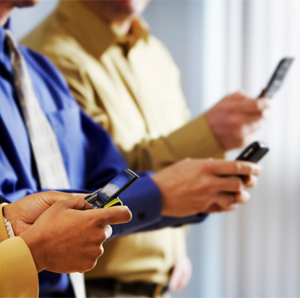Blackout Brings Down Cell Phones
ViewPoints: Electrical and computer engineering professor Fred Harris explains the lack of cell phone access during the Sept. 8 regional blackout.

Once the power went down in the southwestern United States, it was only a matter of time before cell phone access went down, too, said Fred Harris, professor in the Department of Electrical and Computer Engineering.
“The networks are only designed to carry a certain amount of traffic and companies design for what they expect the traffic level to be,” Harris said. “Initially, it was flooded by so many people getting on, the system came to capacity — that meant it was using every resource it had to service each caller and there were no other resources left for other users.
“Later on in the day, the cell phone company towers themselves were running on battery backup power because they lost their primary power source.”
Lack of backup generators
While some cell phone towers have generators that click on in an emergency, many do not, Harris said.
“In the event of a loss of power, the assumption is the loss of power will be temporary and you don’t have to have a backup because, shortly thereafter, the power will come back on. So, after the batteries died, they didn’t have any power at all to service anybody unless they had a generator available.”
But, even then, Harris said, generators are not a complete fail-safe.
“(One service provider) recognized that they did have generators that didn’t click on, so they sent servicemen out to the cell sites to turn on the generators.”
Trouble at home
Compounding the problem is the fact that cell phone users weren’t the only ones without phone-calling capabilities – anyone with a wireless phone at home suffered, too.
“Wireless phones also went dead because — not that the lines to the house weren’t working — but you didn’t have electricity to run the radio frequency part of the link,” Harris said. “So it’s not enough just to have a wired line, you need to have a physically wired line instead of a radio frequency link.”
To circumvent the problem, Harris had two suggestions, including having an “old-style phone” physically connected to a landline.
“That’s no assurance that the normal phone company can’t go down also, but they are some of the most reliable people in the world — they know how to build equipment that lasts, so that would be the last one that would fail.”
Try texting next time
And when it comes to cell phone use, Harris noted one handy tip: texting.
“You can text because the system can handle many, many more text users than they can voice users and that way you don’t flood the system; you can still get a connection. So texting is another option that people should back up to.”
Editorial disclaimer: The opinions and views expressed above do not necessarily reflect those of San Diego State University or SDSU NewsCenter.



